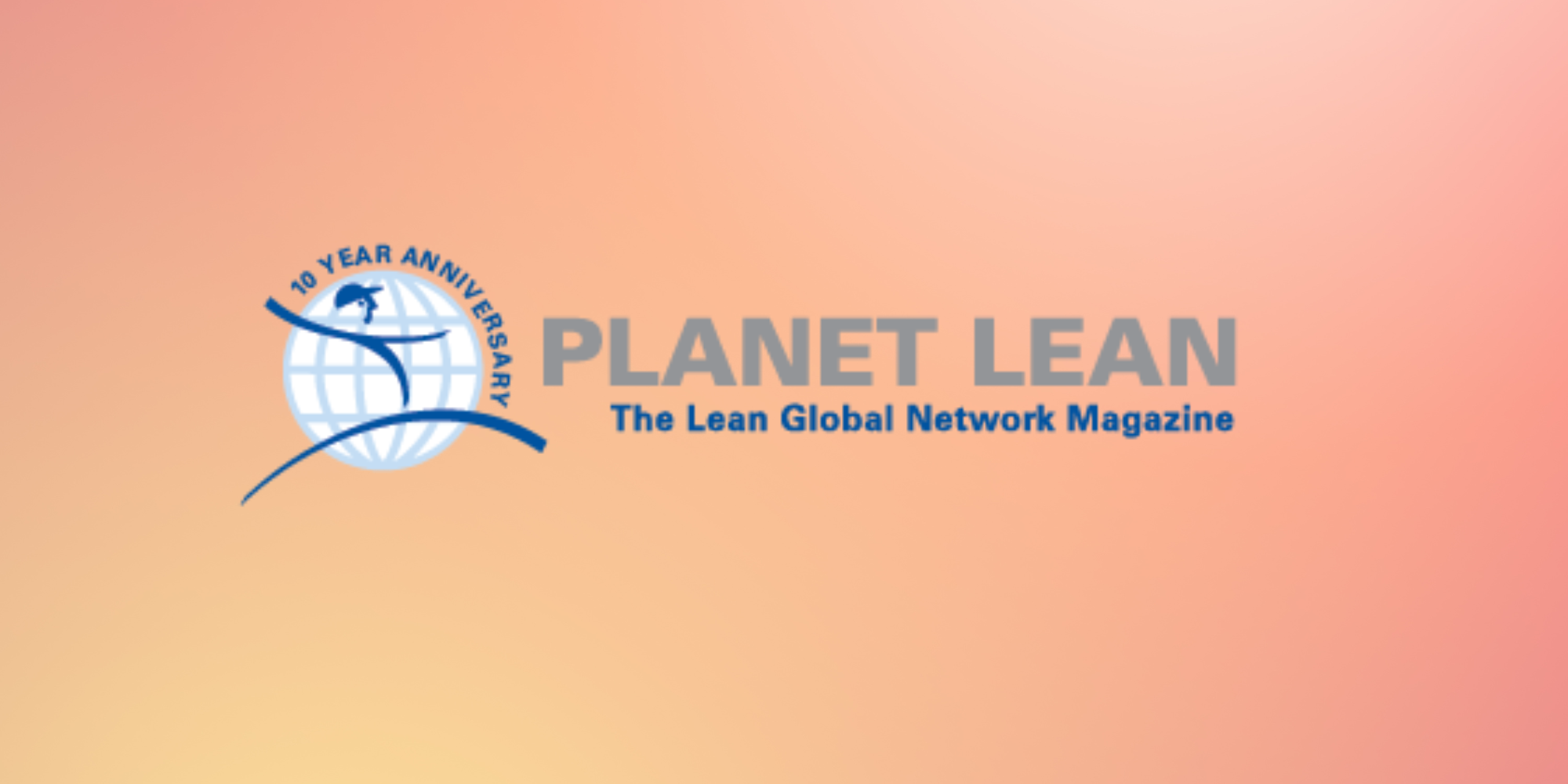
Greg Lane tells PL what Western management is getting wrong
INTERVIEW – We asked Greg Lane to reflect on his experience with lean transformations and to share his thoughts on the leadership behaviors that best support them.
Interviewee: Greg Lane, Principal of Low Volume Lean and faculty member of Lean Enterprise Institute
Roberto Priolo: At the upcoming Lean Management Conference in Wroclaw, Poland you are going to be discussing the managerial behaviors necessary to lead a lean transformation. What are managers getting wrong and what can attendees expect to learn from your presentation?
Greg Lane: I will share a tactical approach to engaging leaders and understanding the underlying behaviors they require if they are to meet their current business objectives.
What the vast majority of organizations are missing is humble inquiry and sincere listening. Managers must get over the idea that their role is to tell people what to do; once they do, they will be able to engage people much more and get the minds of the organization working.
This has to be complemented by the nurturing and developing of people's strengths – those things they are good at and they enjoy doing. It is critical to understand the gap between our managers' strengths and those strengths they will need to successfully perform their role as leaders and reach their business objectives (nobody changes for the sake of changing).
Coaching and mentoring can help us to change and scope behaviors, and the support and feedback of the rest is of team also has a big role to play in shaping future leaders.
RP: You have supported more than 100 transformations in over 30 countries – what is the most common problem that you see companies encountering?
GL: I think that the number one problem is that leaders don't realize that it is not what they say, but what they do that will have a real impact on the organization. Many "talk the talk," but do not support the thinking with their actions and instead spend their days in firefighting mode. Managers still don't understand and embrace the change in their leadership style that will be necessary to support and sustain the use lean tools and methods – especially problem solving.
RP: Do you find local cultures can influence the way leaders around the world approach a transformation?
GL: Any attempt to transform a company must take into account the local culture as well as the organizational culture. Circumstances matter (for example, if a company's strategy is to grow by acquiring other businesses, this is certainly something that we cannot forget) when we try to introduce and sustain the technical tools and principles that lean gives us.
RP: How has working for Toyota shaped your understanding of lean thinking?
GL: During my time at Toyota, I learned the technical tools and the methodology. I don't believe at the time Toyota fully understood the difference between its leadership style and the leadership behaviors we see in most Western organizations.
In a way, the real learning for me came after I left Toyota and started to help transform other organizations, as that difference in leadership behaviors became more and more evident.
What I have come to realize is that there is a fundamentally different approach to learning in Japan. This approach is based on reflection (Toyota's leaders have been taught this way of thinking for 50 years), whereas Western societies have historically favored cognitive learning. This makes it easier for us to learn tools rather than how to reflect.
RP: Do you think this is the reason why most Western organizations are struggling to recreate the level of success that Toyota experiences?
GL: Fundamentally, in the West we try to meet KPIs and metrics related to the short term, rather than being rewarded for developing people in our organizations. This makes it difficult for leaders to focus on developing capabilities and focusing on the long term.
RP: One of things you specialize in is bringing lean to environments characterized by high variation. What recommendations can you give high mix/low volume organizations that are on the lean journey?
GL: The tools and techniques from the high volume conveyor line have naturally become synonymous with lean thinking. What we see is that while the tools can sometimes be difficult to translate into something that one can use in a high mix/low volume environment, there is no doubt that the principles are exactly the same. It is the execution that varies, not the underlying ideas.
Let me give you an example: takt time (which we define as time available divided by customer demand). The tool itself is difficult to apply where we don't have forecasted volumes, but the principle behind it never changes: we have a customer demand based on the time to produce a certain product or deliver a certain service. (In all our quotations, we have a time associated to the job, right?) All we have to do is go back to the principle of takt time and try to visually manage the flow of work based on the time we believe it is going to take to complete it.
Standard work is another example. To many lean practitioners standard work is nothing but a standard operation sheet prepared in a particular format. However, the underlying idea is that there is a best way to do something – which of course applies to low-volume environments too. Here, standard work is exponentially more complicated to put into practice and we have to simplify by going up a level in the product family tree.
I will discuss this in more depth at the Wroclaw conference.
This interview is also available in Polish here
THE INTERVIEWEE

Greg Lane is a faculty member of the Lean Enterprise Institute
Read more


FEATURE – As our social systems grow, we need an effective way to manage them. This makes bureaucracies an inescapable part of life for our society and businesses. But how can we mitigate their negative effects?


NOTES FROM THE GEMBA - Alliance MIM navigates market crises leveraging Lean Thinking, emphasizing flow, maintenance, deep process knowledge, and visible learning to stay competitive in a complex, high-precision manufacturing environment.


FEATURE – The hardest part of a learning journey is learning to learn and figuring out what we need to learn - as opposed to we want to. The author wonders whether we are drawing the right lessons from TPS and highlights a few things we are underemphasizing.


FEATURE – Ten years ago, Planet Lean was launched as a new platform for the Lean Community to share its experiences and knowledge. Our editor reflects on the magazine's mission, history and contribution of the spread of Lean Thinking.

